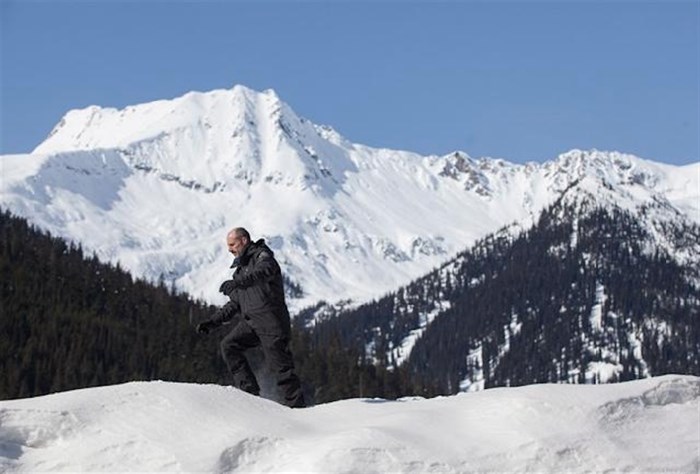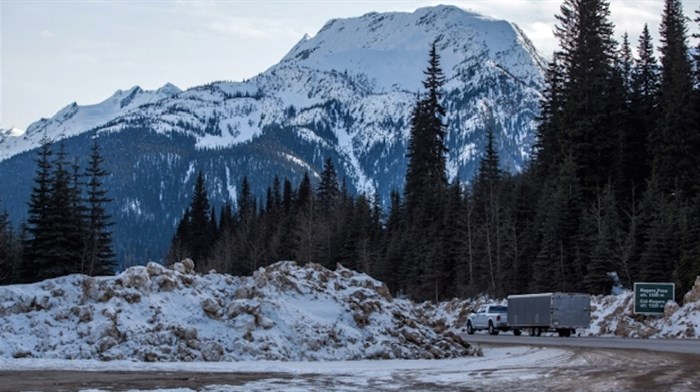
Jeff Goodrich, senior avalanche officer in Glacier National Park walks along the snow banks at Roger Pass, B.C. on Wednesday, March 4, 2015. An abandoned railway line is all that remains at the summit of the Rogers Pass to mark the spot where 58 men lost their lives in what's believed to be Canada's deadliest avalanche around midnight on March 4, 1910.
Image Credit: THE CANADIAN PRESS/Jeff Bassett
March 06, 2015 - 1:32 PM
ROGERS PASS, B.C. - An abandoned railway line is all that remains at the summit of the Rogers Pass to mark the spot where 58 men lost their lives in what's believed to be Canada's deadliest avalanche.
It was around midnight on March 4, 1910.
Workers were clearing snow from another avalanche that had buried the Canadian Pacific Railway line when another slide came roaring down the other side of the narrow valley with little warning.
When it was over, 400 metres of track had been buried. A locomotive and plow had been hurled 15 metres and landed upside down. The wooden cars behind the locomotive were crushed.
Many of the 58 dead were found standing upright, frozen in position.
This week marked the 105th anniversary of the snowslide.
"The scale of the tragedy of what happened on that day 105 years ago just gives you pause to think," says Jeff Goodrich, senior avalanche officer for Parks Canada.
"When you reflect back on an avalanche disaster such as this it reminds you that you do have to treat an area like this with respect and to always be vigilant."
The avalanche was a turning point for CP, which had completed the route through Rogers Pass 25 years earlier.
In 1913, the railway began boring the eight-kilometre Connaught Tunnel through Mount Macdonald. It opened three years later.
"After that event CP Rail made the decision to go underground through this area and abandoned Rogers Pass as a transportation corridor," Goodrich says.
The abandoned line is still clearly visible, cutting a neat swath through the trees.
What had once carried steam locomotives between Calgary and Vancouver is now used by cross-country skiers.
It's just a few hundred metres from the busy Trans-Canada Highway.
John Woods, author of "Snow War — An illustrated History of Rogers Pass," says the information gathered by CP was invaluable when the Trans-Canada was built through the area.
He says the railway did professional studies of avalanches beginning in the 1880s. Engineers remained at snow study camps throughout the year and put together detailed maps of where avalanches were occurring and how strong they were.
"The Rogers Pass avalanche certainly brought into sharp focus this was going to be a challenge to use this route for the Trans-Canada Highway," says Woods. "They had the benefit of the railway's experience and so they went ahead and spent quite a few years looking at the avalanche hazard."
The Rogers Pass disaster was not the first in the area. More than 200 people were killed by avalanches in the region in the previous 26 years.
Woods, who has lived in area for four decades, says avalanches are an accepted part of life.
"When something happens we come together in sorrow and we grieve. Even if you don't know the victims, you still feel the loss."

Snow banks line the Trans Canada highway at Rogers Pass, on March 4, 2015.
Image Credit: THE CANADIAN PRESS / Jeff Bassett
News from © The Canadian Press, 2015